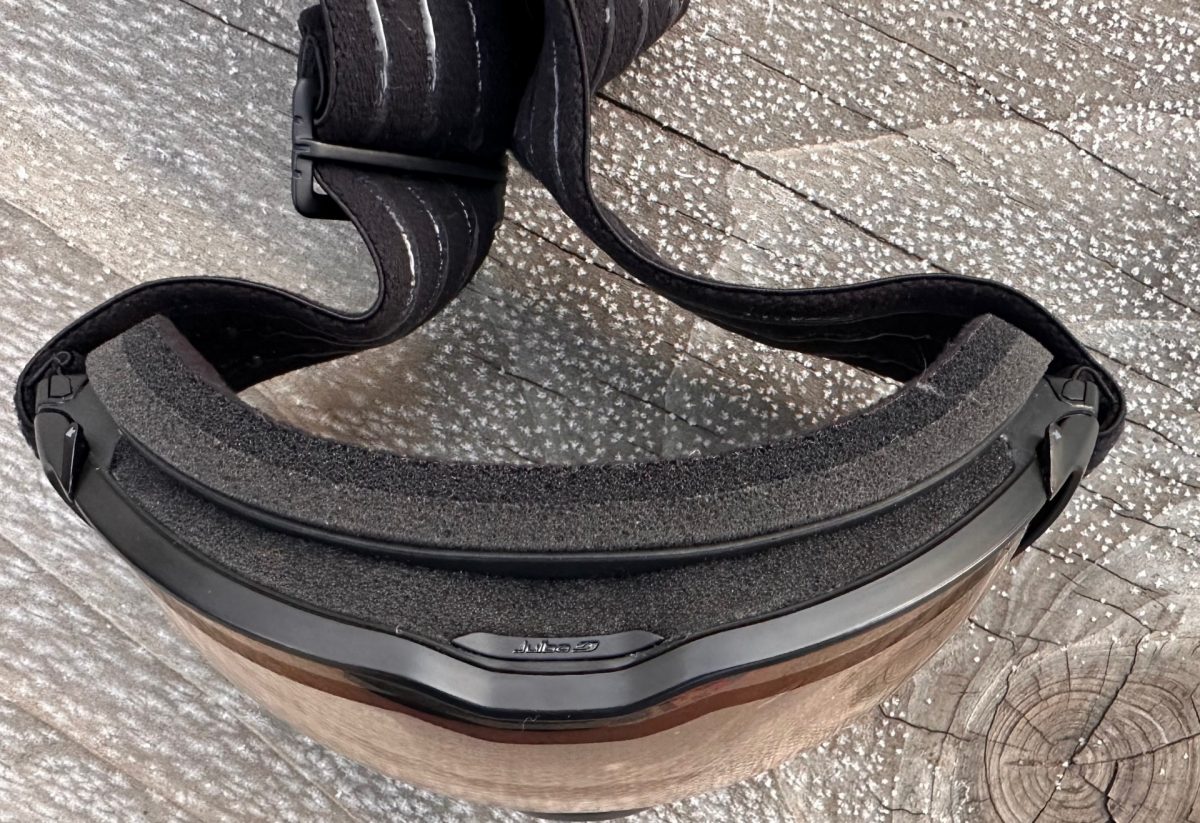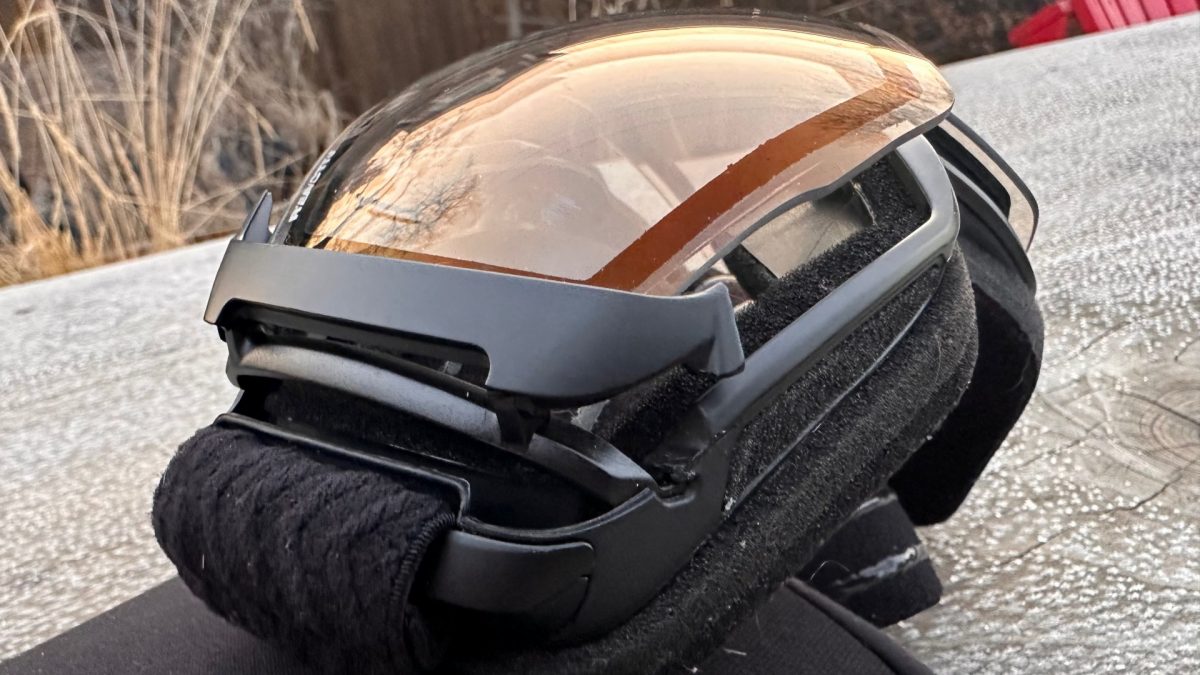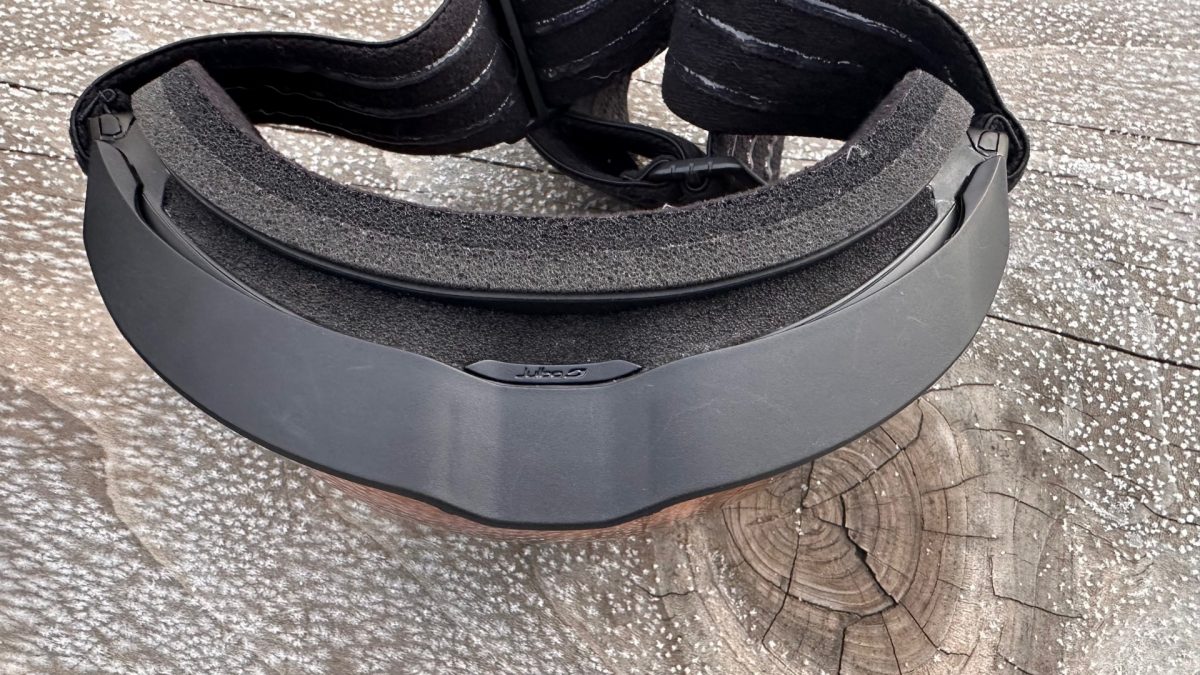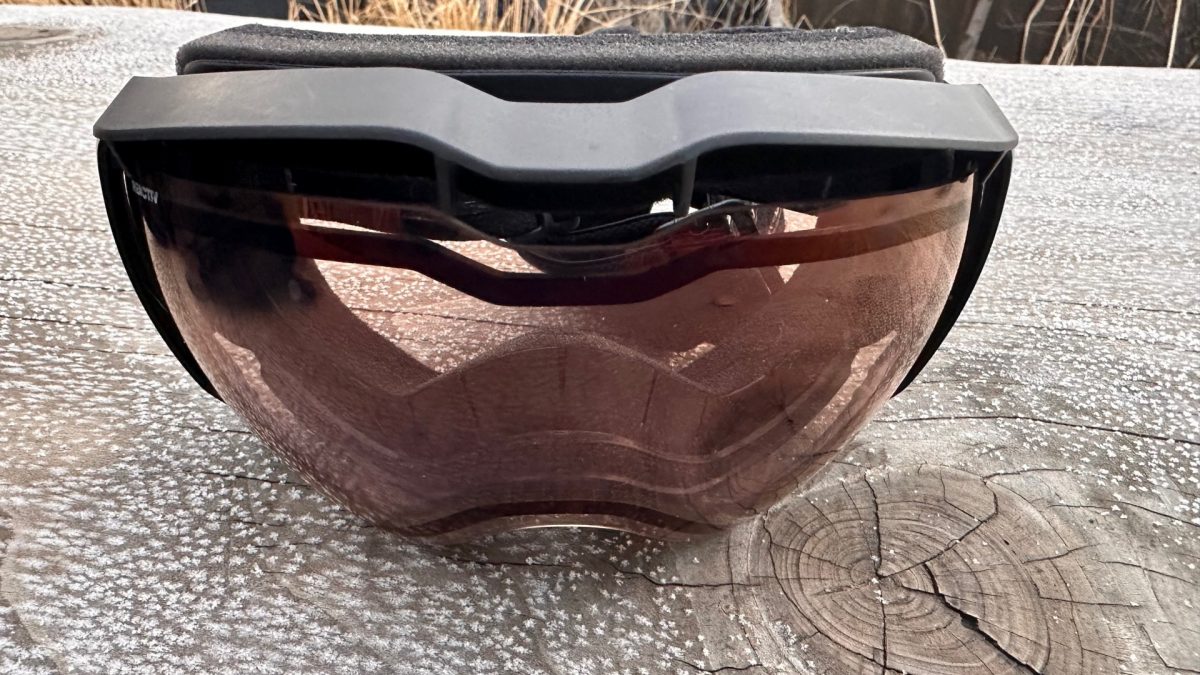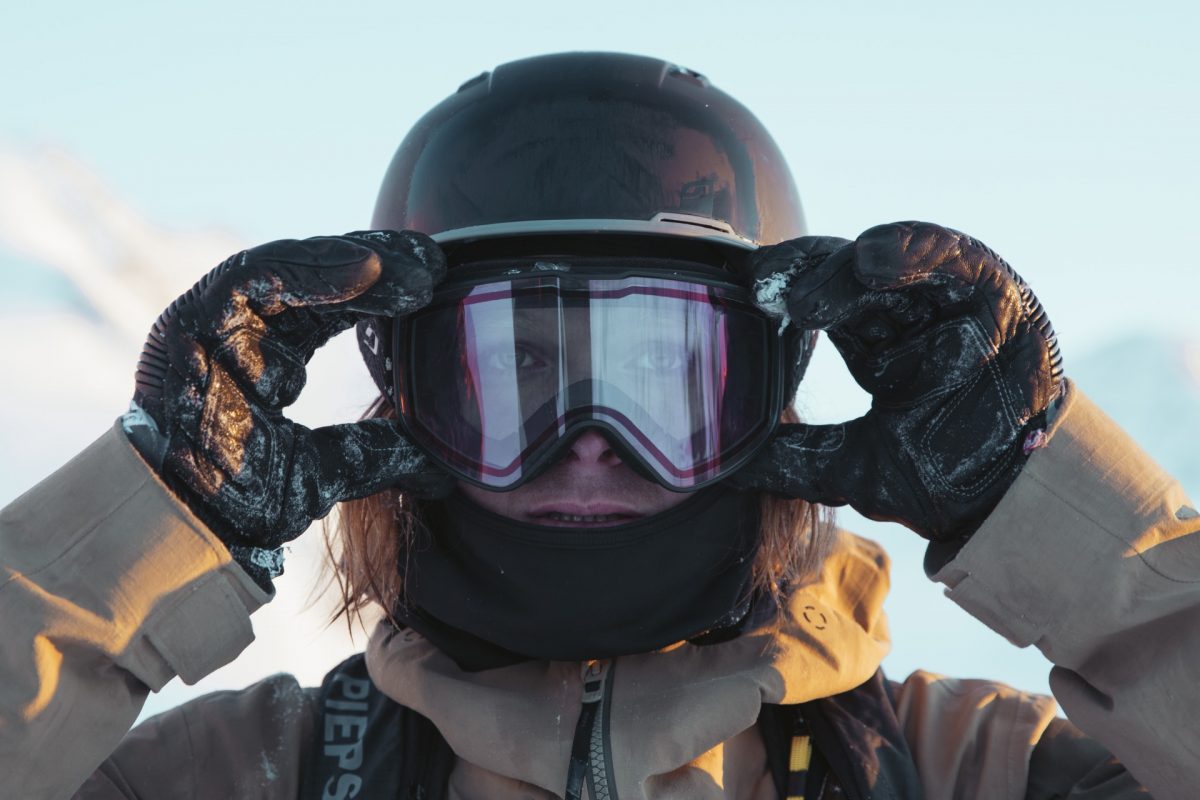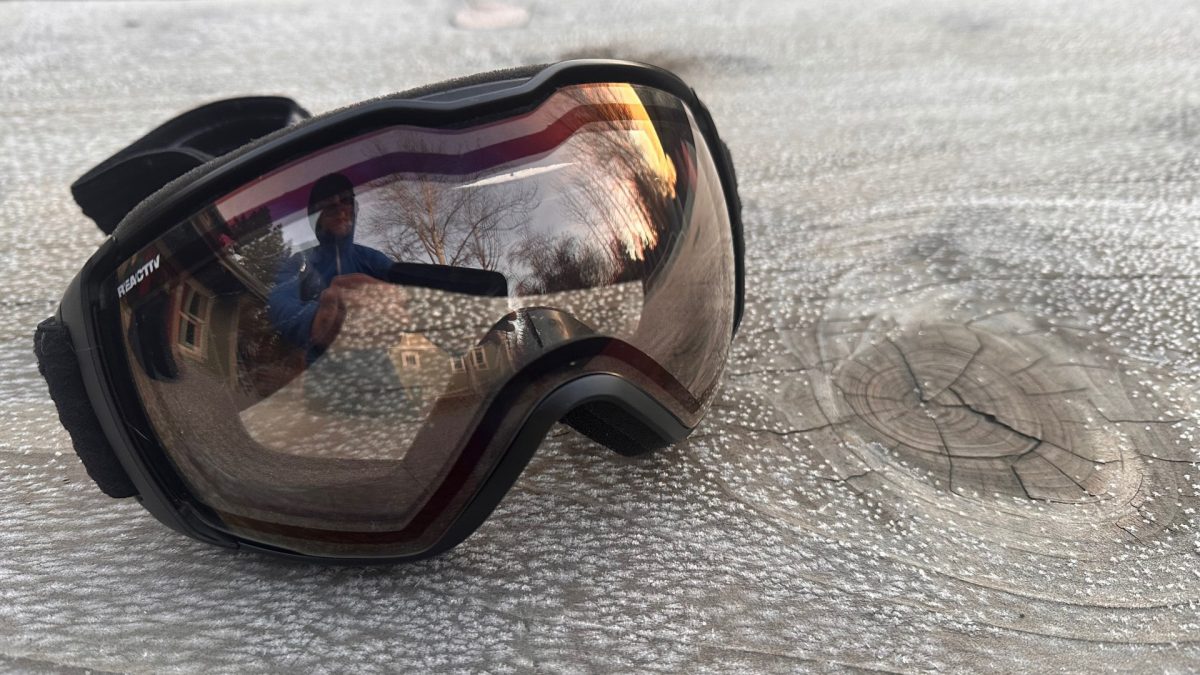
The Julbo Aerospace offers a ventilation system to help prevent fogging and the option for a 0-4 photochromatic high contrast lens. The lens is available in several other Julbo models.
Julbo has introduced a photochromatic lens in the Reactiv 0-4 High Contrast that offers a single-lens option for changing light conditions. We tested the new lens in Julbo’s Aerospace, a goggle designed to mitigate fogging with a built-in vent system.
Goggles are a style statement. Besides looking rad and cyborg-like, they provide high-value function when the snow blows sideways, and good vis is required. The past few years have seen wide full-view lenses provide near windshield-like coverage. (They also serve as the unofficial “hey, I’m a skier/rider” signage dangling from a rearview mirror in any town close to snow and some vertical relief.)
In the backcountry, goggles can come up against some deal breakers. Primarily, I’m talking about the propensity for lenses to fog up and the changing nature of light conditions in the mountains.
Some notes before we proceed: I wear prescription glasses and have shied away from contacts. While ski touring, I wear prescription sunglasses (review pending) and use goggles sparingly. In other words, I use goggles purely for function and not style. If it is dumping, I wear goggles on the descent. However, I almost always bring goggles in the pack, as I’ve been burned too many times historically with a clear and sunny forecast only to be duped into complacency and absent goggles when the dumpage ensued.
The Anti-Fog Hardware
Goggles on the uphill? Fashion faux pas it might be. But we’ll put that aside for, as Pete Vordenberg says, “the integrity of the test.”
Even with slight exertion when wearing goggles while skinning (again, allow me this thought experiment), it’s likely the moisture you off-gas with high exertion will condense on the goggle’s lens.
The Julbo Aerospace has a nifty four-point hinged lens that pops out and away from the frame for added ventilation to prevent the “fog.” Julbo calls this the SuperFlow System. We’re talking about a full 1cm of space along the lens’s top and bottom, and about .75cm on the sides. That is a considerable amount of potential airflow. It’s easy to open and close the hinges while wearing the goggle.
Note, the lens in standard mode, meaning it is not popped out for more ventilation, looks, and functions like a traditional goggle lens.
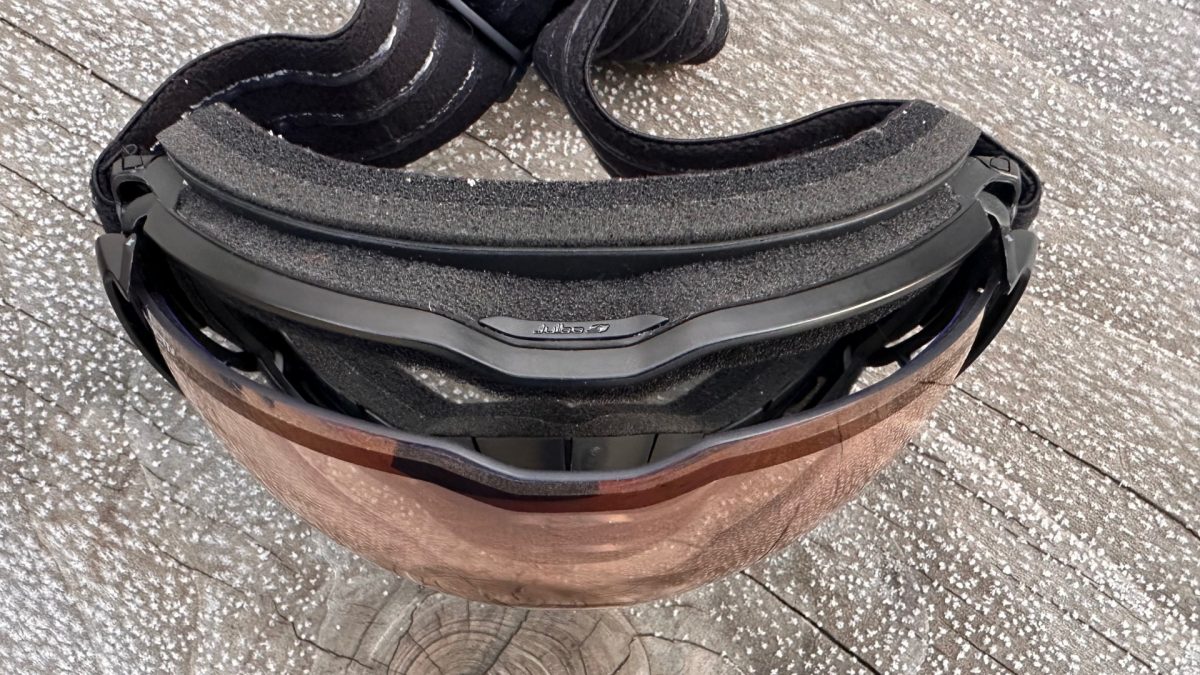
With the vents opened the gap between the lens and goggle frame is 1cm along the top and bottom, and ~.75cm on the sides.
To further set the scene, this ventilation system works fine when skinning in clear, somewhat cold conditions. Am I hammering? Not exactly, but for the test, I’m going at a solid clip, barely able to hold a conversation. Confirmed, the SuperFlow System provides ample enough airflow to prevent fogging. The inner lens is pretreated with an anti-fog coating, which likely helps the lack of fogging cause.
In this same scenario, with rain and wet snow falling, the airflow is still great, but I did experience some subtle lens fog. My fixes were simple, I could slow down and decrease my level of exertion, or I could take the goggles off, wipe with a lens cloth, and gently swing them around to get some more airflow through the lens to dissipate any remaining moisture.
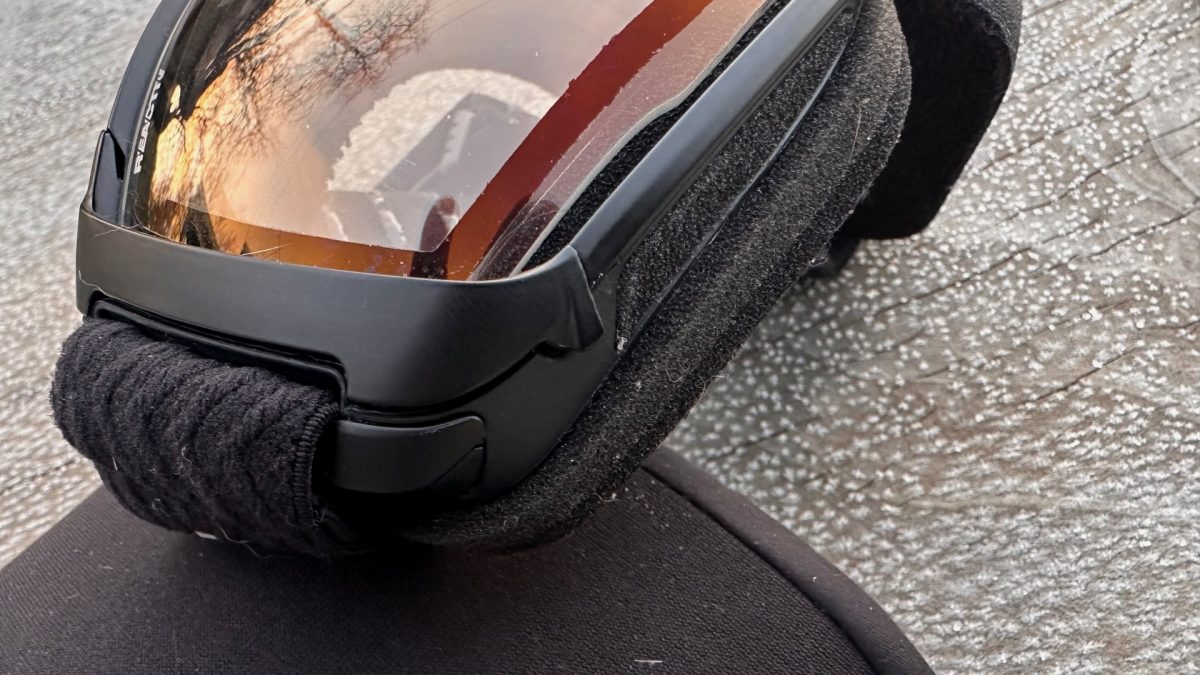
A side view showing the lower left hinge. The Super Flow System uses four hinges, one in each corner of the lens. This allows the lens to pop out to create ample venting to prevent lens fogging.
Julbo also provides a fitted plastic piece called a “peak,” as part of the lens system. The peak can be secured atop the lens to prevent snow/falling moisture from contacting the inner lens. Deploying the peak is fiddly and takes a few times to become practiced at securing it in place. Yet, with the peak affixed, there’s still ample ventilation to keep the lens clear while skinning in a snowfall. The caveat is this: I needed to keep the exertion level low. So for those one-speed skinners who L4 all day long, the lens might still fog slightly when the precip falls.
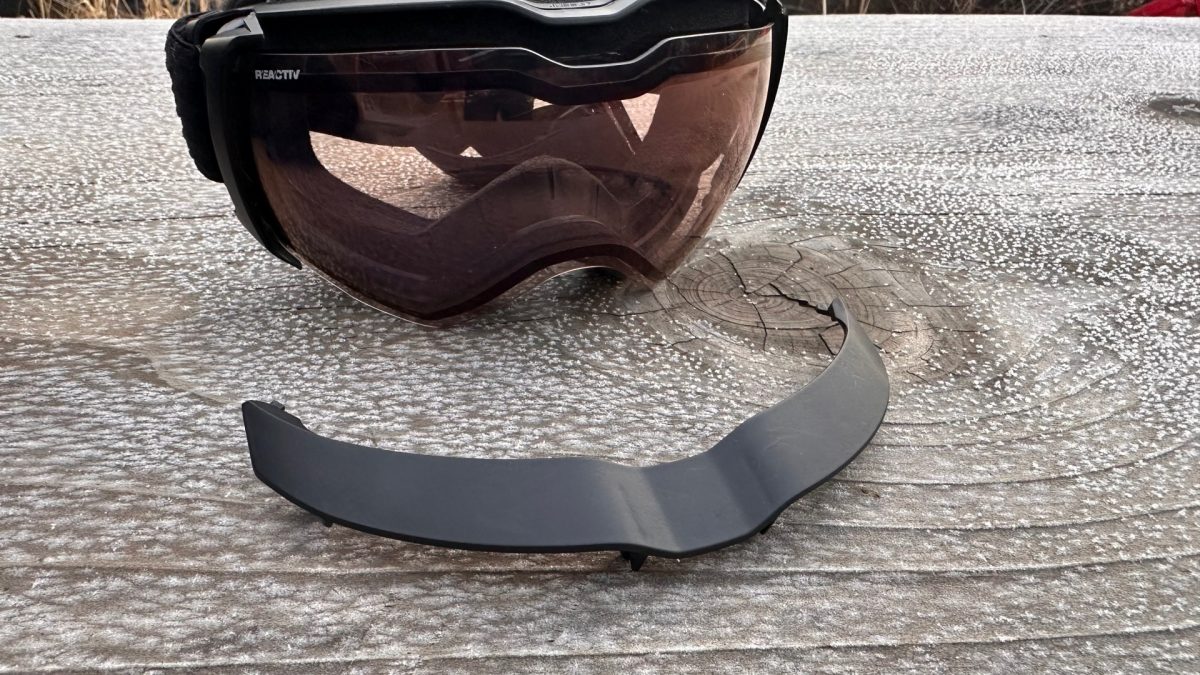
The plastic “peak” can be secured atop the lens when the vents are opened. The peak helps prevent moisture from coming in contact with the inner lens.
One thing to consider, too, when donning the Julbo Aerospace goggles, is what type of hat you’ve got atop your head. Wearing a thicker nordic style hat traps more heat which may cause more potential fogging. I often skin in a mesh ball cap with a buff over the cap and a fleece hoody (with hood deployed) if extra cold. In my experience, the extra ventilation of a mesh ball cap helps with the Aerospace’s anti-fogging properties.
If you insist on wearing goggles on the up, the Julbo Aerospace should be considered part of your eyewear quiver. These goggles are as good as I’ve seen regarding lens fog prevention.
Descents
A goggle should serve the basic function of eye protection in inclement weather. Yet, I know many others who, 100 percent of the time, wear goggles while descending, no matter the weather. These goggles will work for that crew. I wear the aforementioned prescription sunglasses in most conditions while descending unless it’s spitting moisture; in that event, I wear goggles.
Opening up the SuperFlow System is possible for descents, but know you’ll feel brisk air flowing through the lens.
The REACTIVE 0-4 High Contrast Lens
As an eyeglasses wearer, I also think about available daylight. This means I often bring two sets of glasses: one for sunny conditions and another for dawn patrol starts or potential post-sunset returns. I usually accept a lack of flexibility regarding available (and type of) daylight and having a specific goggle lens for the day’s light. I understand that many goggle models can interchange lenses depending on light conditions, including clear lenses for low light.
Call me lazy.
With my assortment of glasses hauled along for most ski tours, I’m a single-lens user when considering goggle lens options. The Aerospace has me covered for most light conditions I’m likely to encounter.
Julbo is known for its high-quality photochromatic lenses. Call these “transition” lenses; they darken or lighten, depending on UV exposure. As someone who wants to keep lens options to a minimum, this has been a great feature. The lens doesn’t darken considerably in mid-winter low-angle light and in cloudy conditions, so it is still excellent for low-light conditions. This also makes the goggle great for dawn patrols that leave you atop a line at daybreak when you still need to drop in— work awaits.
When the clouds part, these photosensitive lenses darken right up. The lens in this pair of goggles is the new REACTIV 0-4 high contrast lens. It goes from 0-4, considering its VLT (visible light transmission).
0 is clear, and 4 allows less than 10% of the visible light through; at its darkest, this is a dark lens. Glacier glasses, for example, often bump to a 4. (The goggles do get dark, but I’ve yet to wear them on a full-blown glacier in late spring to early summer when the sunshine is cranking.)
As the lens transitions from clear to dark, it does so with an amber tint, which helps enhance contrast. Many skiers opt for an amber/reddish tint to get better contrast in flat light. I could go back and forth, but I might give the nod to a bright yellow lens in the flattest of light.
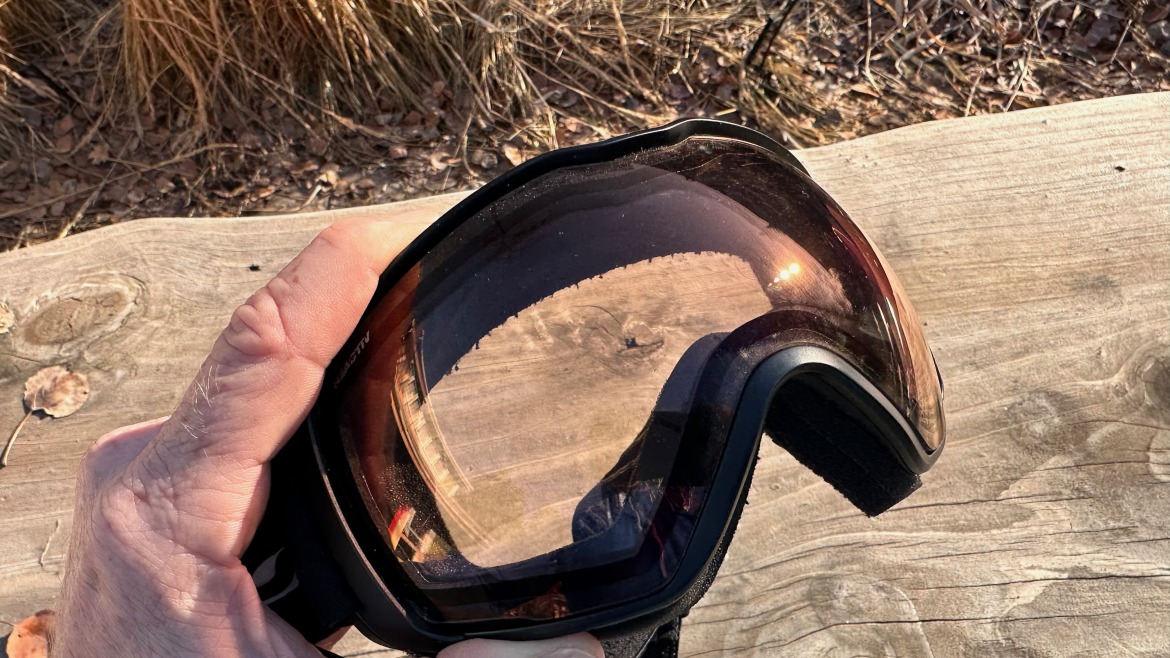
Popped out of the stuff sack and into some low angle morning sun — the lens is clear with a slight amber tint after 20 seconds.
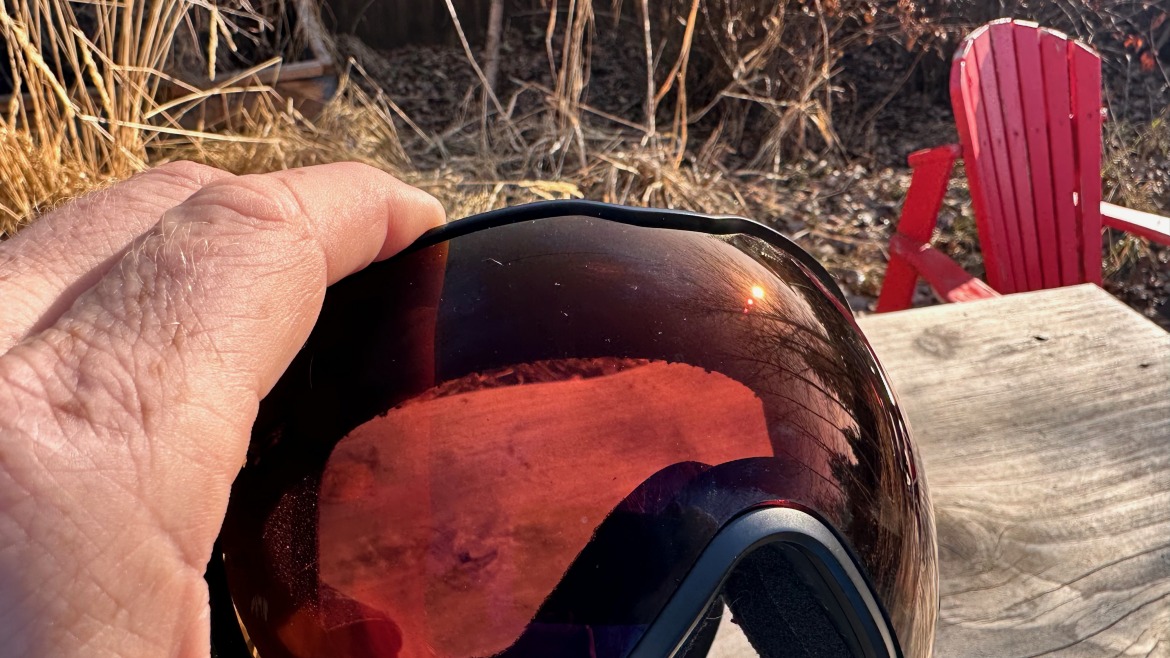
After two minutes in this same low-angle sun, and no-snow to reflect UV rays back towards the lens, the lens is noticeably darker with a more intense amber tint.
Considering what you get in this one-lens package, the REACTIV 0-4 lens is prime for someone like myself who would only consider bringing one goggle lens. Julbo claims, “The Reactiv boasts the widest photochromic range of any lens on the market.” It is a wide range.
This spherical lens is available for several Julbo models beyond the Aerospace, including the Skydome, Shadow, Quickshift, Cyrius, and Cyclon.
To Transition or Not
As photochromatic lenses have been around for a while, some common themes have arisen. Typically, the fade rate is longer than the darkening rate. Further, in cold temperatures, transition lenses become darker, but also fade more slowly relative to fade rates in warm temps.
This is to say that although this may be true, here are some things to consider with this transition lens. If I take the goggle straight from my pack (no sunlight) into bright sun, with temps just below freezing, it’s about a minute + for the lenses to seem fully dark (or as dark as they’ll get) in these conditions. Although that doesn’t seem like a long time, you might disagree.
If you are skiing from a sunny wide open flank of mountain into a shaded tree shot, the lenses will play catch up; the fading takes more time and anecdotally is slower than the darkening rate. I know of several mountain bikers who frown on transition lenses due to delayed fade rates when riding from open to forested (shaded) trails.
Closing Thoughts
The Aerospace with the REACTIV 0-4 high contrast lens comes to the scene, meeting all my needs for a goggle. Again, I’m practical regarding goggles. I want some vents for potential fogging and some range considering the lens’ use in different types of light. The optional vents increase airflow, and the Reactive 0-4 lens can be used from sunrise to sunset.
The cost is not cheap at $279.95, but backcountry skiers/riders with a goggle habit know that scene already.
I’ve had no issues with the plastic hinges that make up the venting system. However, I carefully open and close the vents to ensure the goggles are around and functional for a long time: Plastic sometimes tends to break.
The goggles come in a protective carry pouch for easy stowing inside a pack. My go-to pack does not have a special protective pocket for goggles—I store them in the pouch and toss them in. So far, I’ve had no problems.
The goggles fit fine under my Petzl Sirocco helmet.
The Stats
Strap: dual point adjustment head strap and silicone strips to prevent slippage.
Option to vent lens
Optional Reactive 0-4 High Contrast lens for clear near-dark mornings and bright sunlit snowy terrain.
Price: $279.95
Shop for the Julbo Aerospace with the Reactiv 0-4 high contrast lens.
Jason Albert comes to WildSnow from Bend, Oregon. After growing up on the East Coast, he migrated from Montana to Colorado and settled in Oregon. Simple pleasures are quiet and long days touring. His gray hair might stem from his first Grand Traverse in 2000 when rented leather boots and 210cm skis were not the speed weapons he had hoped for. Jason survived the transition from free-heel kool-aid drinker to faster and lighter (think AT), and safer, are better.

